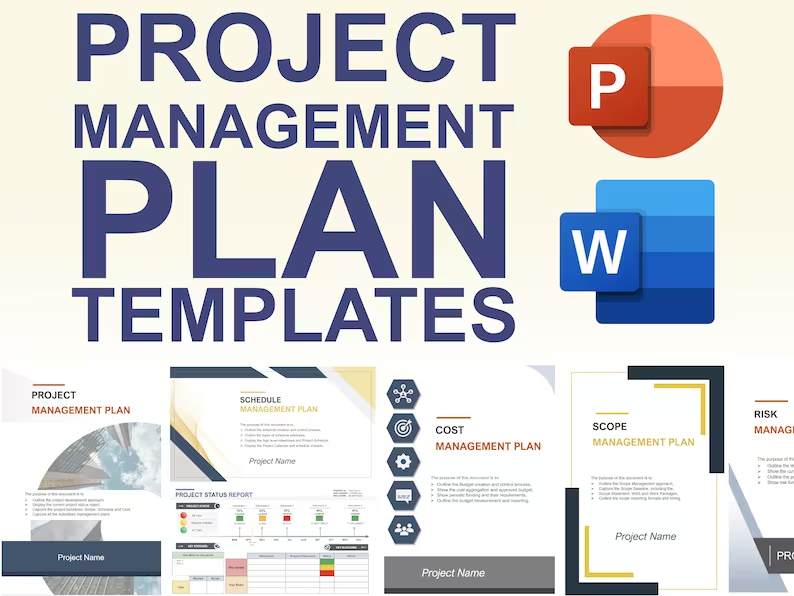Click the video above to view.
 Project management can be a challenging role, often involving significant responsibilities with limited control over crucial factors like resources and funding. Effective negotiation skills are vital for overcoming these challenges and ensuring project success. Drawing insights from three renowned negotiation books – “Getting to Yes” by Roger Fisher, “Never Split the Difference” by Chris Voss, and “The Secrets of Power Negotiating” by Roger Dawson – this article outlines key negotiation strategies to enhance your skills and achieve better outcomes in your projects.
Project management can be a challenging role, often involving significant responsibilities with limited control over crucial factors like resources and funding. Effective negotiation skills are vital for overcoming these challenges and ensuring project success. Drawing insights from three renowned negotiation books – “Getting to Yes” by Roger Fisher, “Never Split the Difference” by Chris Voss, and “The Secrets of Power Negotiating” by Roger Dawson – this article outlines key negotiation strategies to enhance your skills and achieve better outcomes in your projects.
Understanding the Basics of Negotiation
Negotiation is a Two-Way Process
Negotiation is a two-way process, where both parties bring their needs and constraints to the table. It’s easy to feel disadvantaged, but effective negotiators understand that this perception often doesn’t reflect reality. For instance, when negotiating for a pay raise, you might feel the hiring manager holds all the power, but they might also be concerned about the costs and the potential hassle of hiring a replacement. Recognizing that both sides have their stakes and concerns can shift your perspective and your strategy.
Embracing Conflict and Patience
Good negotiators are not deterred by conflict or the desire to be liked. They approach negotiations with courage and patience, which allows them to ask for more, probe deeper, and endure through the process. Being pleasantly persistent and maintaining composure under pressure often leads to better outcomes.
Navigating Negotiation Rules
Negotiation operates within a framework similar to games like chess or Battleship. There’s an opening phase, a middle phase where tactics and concessions are exchanged, and a closing phase where the final agreement is reached. Understanding and maneuvering through these phases effectively is crucial for a successful negotiation, and those techniques are what you will learn in this article and video.
The Power of ‘No’
In negotiations, receiving a ‘no’ can often be the beginning of the process, not the end. While a ‘no’ indicates that an agreement hasn’t been reached yet, it also can mean an agreement could be reached soon. By using the methods outlined here, the first “No” is often just the beginning.
1. Beginning Negotiation Methods
The Reluctant Seller or Buyer
Adopting a reluctant stance can be a powerful tactic. As a reluctant seller, you might express hesitance about parting with an item, or as a reluctant buyer, you might downplay your interest. This approach can lead to better initial offers or terms.
Asking for More Than Expected
Start with a higher demand than what you expect to receive. This strategy provides room to negotiate down to a more realistic outcome and helps avoid deadlocks.
Get the Other Party to Go First
They may offer more than you expect, it gives you information about them before you have to tell them anything, and it enables you to bracket their position.
Bracketing Your Position
Bracketing involves making an initial offer that is strategically distant from your ideal price but still plausible. For example, if you want to buy a car for $20,000 and the seller offers $23,000, you might start your offer at $17,000. This method helps in moving closer to a fair deal.
Flinching at Proposals
Reacting with surprise or shock to a proposal can discourage the other party from making additional demands and can lead to more favorable terms.
Never Accept the First Offer
Never accept the first offer immediately. This often indicates that the other party might have more flexibility, and accepting it too quickly might result in less favorable terms for you.
The Vise Technique
There are two methods here – when someone gives their first offer, reply with:
“I’m sorry, you’ll have to do better than that,” and then waiting for the other person to speak.
In Never Split the Difference, Chris mentions another way:
“I’m sorry, but how am I supposed to do that?” and then waiting.
The key is waiting and DO NOT break the silence. You may repeat yourself if they have not adjusted their offer in return.
Ensure They Know You Have Other Options
Mentioning alternative options or competitive offers can strengthen your negotiating position. This tactic provides leverage and can prompt the other party to offer better terms.
Use Specific Numbers In Your Offer
Offering precise numbers rather than round figures can make your demands seem more calculated and reasonable, thereby increasing the likelihood of acceptance.
Acting Dumb is Smart
Sometimes, playing dumb or feigning ignorance can lead to beneficial concessions and provide additional time to make decisions.
Anchoring
Setting an initial price or emotional anchor can influence the negotiation range. By exaggerating your initial demands or reactions, you can steer the negotiation toward more favorable terms.
2. Middle Negotiation Techniques
Inventing Options to Negotiate With
Creativity in negotiation can be beneficial. Offering non-monetary concessions like extra benefits or perks can help bridge gaps and facilitate smoother agreements. For example – you could negotiate with gaining extra paid time off or work from home days, if a higher rate of pay wasn’t available.
Leveraging a Higher Authority
Introducing a higher authority, whether real or fictional, can buy you time and leverage in negotiations. For instance, saying you need to consult with a committee or partner before finalizing a deal can create space for further negotiation. Always check with a “higher authority” when negotiating, and they can even ask for additional concessions form the other side.
Never Offer to Split the Difference
One common mistake in negotiations is to offer to split the difference. While this approach may seem fair on the surface, it often doesn’t account for the initial positions of each party. For example, if one party starts at $20,000 and the other at $80,000, splitting the difference would result in a price of $60,000, which may still be far from what you were willing to pay.
Instead of suggesting a split yourself, focus on emphasizing the time and effort invested in the negotiation and the remaining gap in the price. By doing so, you may prompt the other party to propose splitting the difference. When they do, use it as a bargaining tool. For instance, if they offer to meet you halfway, you can use this as a basis to negotiate a better deal by framing the revised offer as more favorable compared to the original price.
Handling Deadlocks
When negotiations stall, especially with a single item at stake, it’s crucial to explore alternative solutions. Inventing options – such as offering additional work-from-home days instead of price adjustments in a salary negotiation for example – can help break the deadlock. These creative concessions can provide value without compromising on your main objectives.
The Set-Aside Gambit
Another effective technique to deal with deadlocks and impasses is the set-aside gambit. Temporarily table the contentious issue and focus on resolving other smaller matters. Once you’ve made progress on these secondary issues, it becomes easier to tackle the primary concern with renewed momentum.
The Power of Trade-offs
When making concessions, always request something in return. This principle of reciprocity ensures that concessions are balanced and can lead to a better overall deal. For example, if you agree to a lower price, ask for additional benefits such as a more comprehensive health plan or extra paid time off. This also stops the other party from asking for concessions again and again, if they know there will always be a trade-off.
Pivoting to Non-Monetary Terms
If the other party cannot meet your financial expectations, pivot to non-monetary terms. High-value resources or services can often bridge the gap when monetary adjustments aren’t feasible.
The Impact of Written Agreements
People are more likely to believe and adhere to what is in writing. Presenting terms and conditions in a formal document rather than verbally can reinforce the seriousness and validity of your proposals. Written agreements, testimonials, and contracts carry more weight and are harder to dispute.
Managing the Hot Potato
Be cautious of the “hot potato” technique, where the other party tries to pass off their problems onto you. Test the validity of their claims and use trial balloons to assess whether their issues are genuine deal-breakers. For example, if they claim budget constraints, ask how they plan to resolve the issue or who else might authorize the necessary changes.
3. Closing Negotiation Techniques
Strategic Withdrawal of Offers
Withdrawing an offer can be a powerful tactic to induce urgency and trigger loss aversion in the other party. For example, if you initially offered $40,000 for an item and then retracted it, suggesting a higher price like $60,000, the other party may feel pressured to accept the original offer of $50,000 due to fear of losing the deal.
Leveraging Time Pressure
Time pressure can be both a challenge and an opportunity. As deadlines approach, parties often become more flexible and willing to make concessions. However, be cautious not to reveal your own deadlines. Instead, subtly shift the focus to the other party’s timeframe to gain leverage.
Projecting Walk-Away Power
One of the most powerful negotiation tools is the ability to walk away. By demonstrating that you have viable alternatives and are prepared to leave if necessary, you enhance your bargaining position. This psychological leverage can compel the other party to offer better terms to avoid losing the deal.
Positioning for Acceptance
As negotiations conclude, ensure that the deal is positioned for easy acceptance. Use your invented options to offer non-price-related concessions that make the deal more appealing and mitigate any potential buyer’s remorse. Congratulating the other party on the deal can also help solidify the agreement and foster goodwill.
Navigating Nibbling and Concessions
Be aware of “nibbling,” where the other party adds small additional requests after agreeing to the main terms. To counter this, be prepared to address these requests with clear boundaries and maintain consistency in your concessions.
Dealing with Ultimatums
Ultimatums can be challenging, but they should be tested for validity. Use trial balloons or suggest alternative timelines to see if the other party is truly committed to their threats. Often, the longer they delay action on their ultimatum, the less likely they are to follow through.
Conclusion
Negotiation is a dynamic process that involves a range of strategies and techniques. By mastering these approaches—from avoiding the split-the-difference trap to leveraging written evidence and managing time pressure—you can enhance your negotiation skills and achieve more favorable outcomes. Remember, successful negotiation is not just about reaching an agreement but doing so in a way that meets your goals while maintaining positive relationships.
See more Leadership articles:
- How To Negotiate for Career Success | 20+ Tips
- Using Maslow’s Pyramid to Motivate your Team
- Don’t Give Up – You Might Be at This Crucial Stage
- Six Negotiating Tips from Never Split the Difference
- The Power of Robert Cialdini’s Six Weapons of Influence
- The Agile Manifesto is Being Corrupted – By Us
- How We See Ourselves Shapes Our Future Actions and Results
You can see what people are saying about David McLachlan here: REVIEWS
Navigate to Free Project Management and Leadership Articles through the links on the right (or at the bottom if on Mobile)





 People use time pressure or deadlines to make the other party do things against their best interest.
People use time pressure or deadlines to make the other party do things against their best interest.